Editor Dom Holtam gets testing with Swarovski scopes to find out if bigger really is better, and finds the Z8i 1.7-13.3x42 punches way above its weight
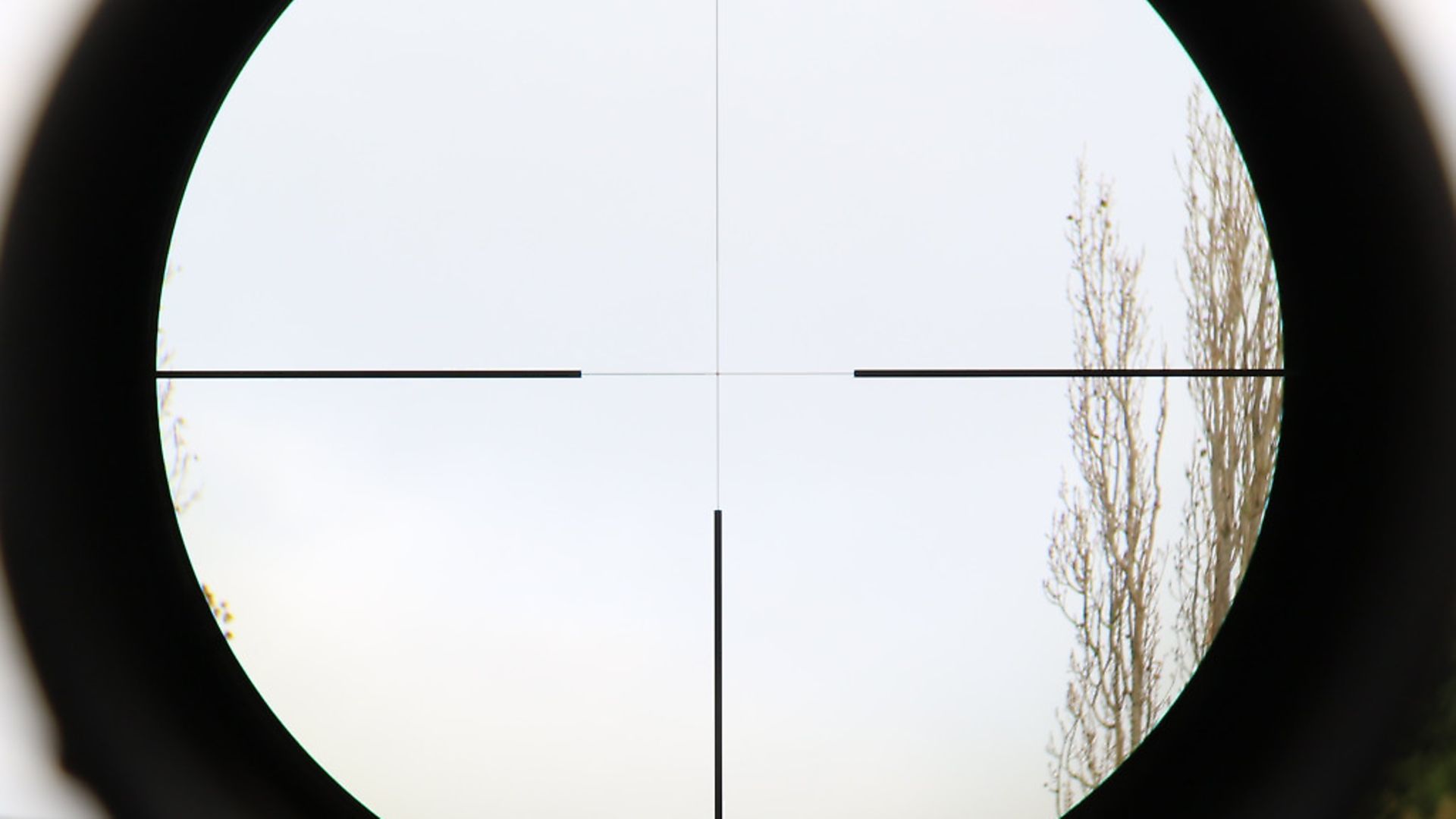 credit: Archant
credit: Archant
It is fair to say that shooters in the UK tend to think that bigger is better when it comes to riflescopes. Those sporting light-sucking 56mm objectives are perennial bestsellers, with 50mm options a fairly distant second.
I have always wondered why. I guess that we don’t have any true mountain hunting in the UK – at least not of the sort that you find in the Alps and Pyrennees – and I guess deer stalkers like the ability to eke out every last minute of ‘shootable’ light at dawn and dusk.
Personally, I have always liked slightly smaller scopes – my first was a compact 8x50 Swarovski that I used for both stalking and taking boar under the moon. I never felt particularly let down by its nocturnal performance and I don’t recall it ever costing me a shot.
The Z8i has very quickly carved a strong following here in the UK but again it is the big boys that have garnered most of the sales. My contacts in the trade suggest that 56mm still dominates across the UK, with 50mm models lagging behind, but what of the smaller options in the Z8 range?
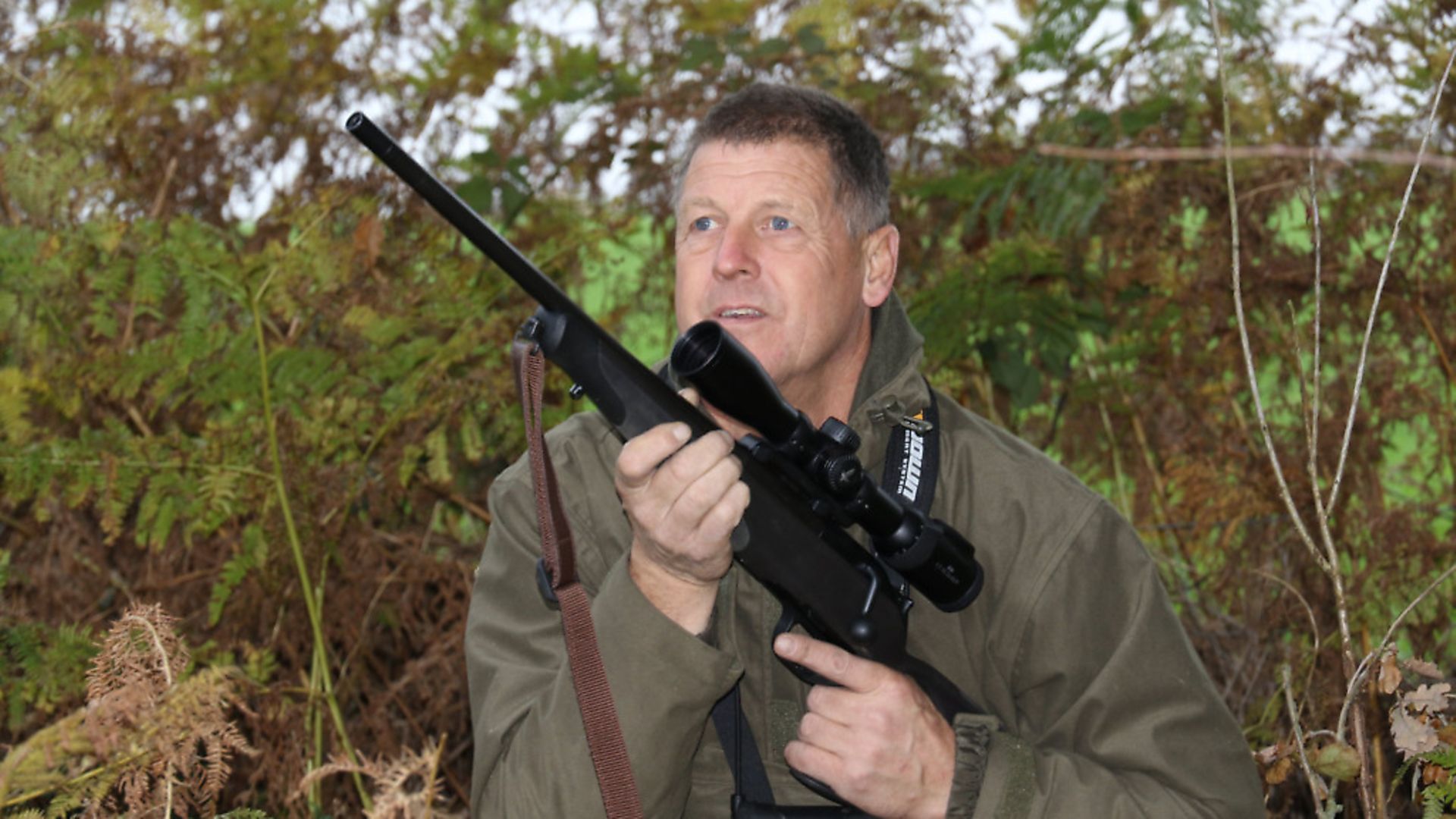 credit: Archant
credit: Archant
Driven hunt scopes aren’t really popular here as it is not a hunting heritage we have on our shores. And although many of us enjoy travelling to the continent to participate, few of us will own a dedicated premium optic for that sole purpose. So discounting the 1-8x24 for the vast majority of UK buyers, that leaves the rather awkward sounding 1.7-13.3x42.
Well, apart from looking like an A-level maths problem, this model is a bit of an unsung hero. Going back a few years, the 6x42 was a hugely popular scope specification for stalking, especially for lowland and woodland hunters. Compact, lightweight and giving decent optical reach for close to medium-range hunting… a fine optic.
But the game has moved on. In fact, it’s almost a different sport altogether thanks to the sheer technical wizardry of this most modern and versatile ‘superzoom’.
Let’s look at the technical specification for a little while. The massive zoom range of the Z8i means that, in fact, you are giving away very little. The 1.7-13.3x42 has almost all hunting bases covered.
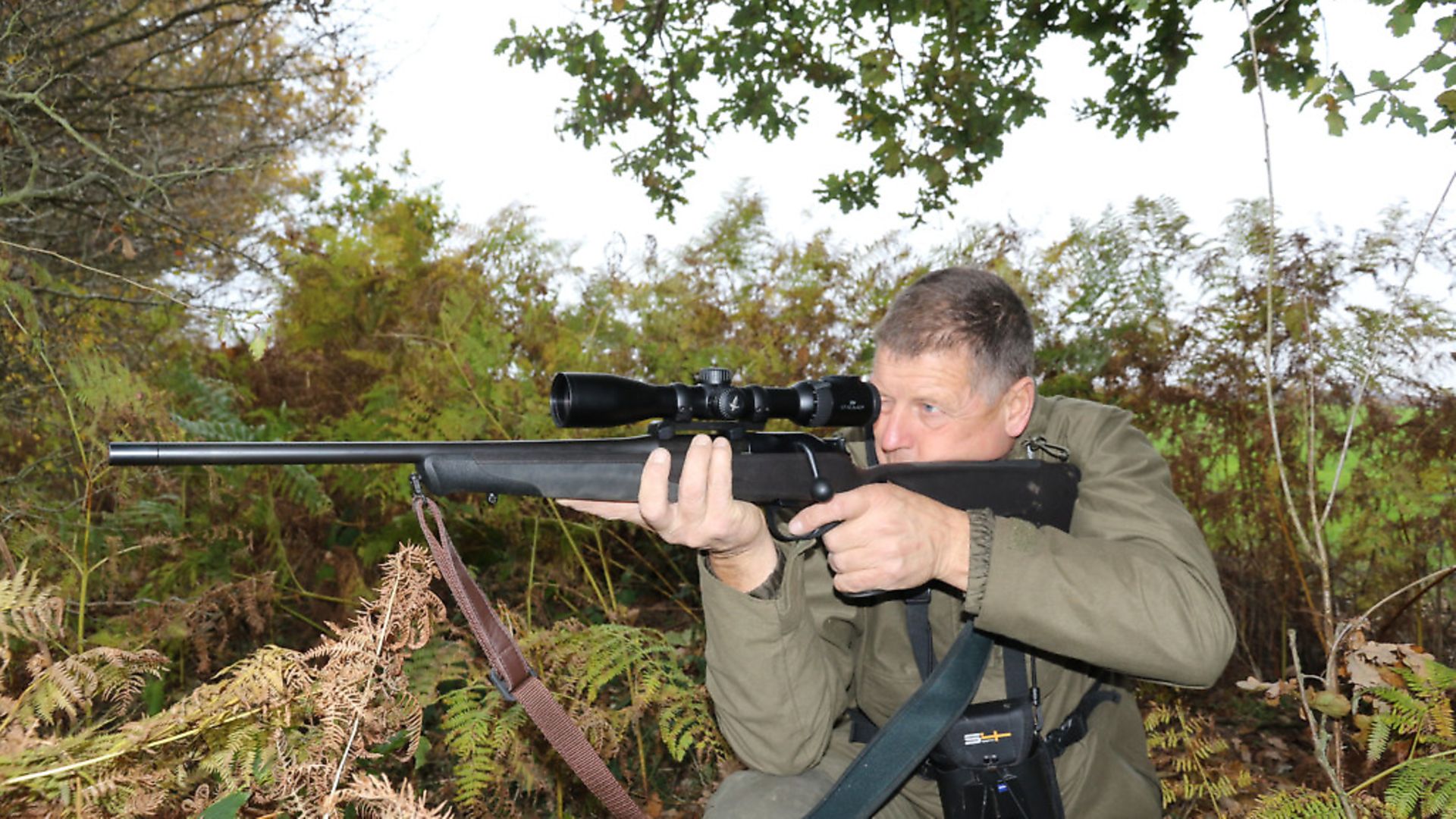 credit: Archant
credit: Archant
Wide open at 1.7x magnification, it has a massive field of view – 25.2m at 100m – while ramped right up to the top of its mag range it has enough reach and precision, thanks to the fine reticle and small centre dot, to engage distant targets at the shooting range with confidence.
Absolutely, you can use this for driven hunting. Absolutely, you can use this for Africa. Absolutely, this is ideal for mountain hunts or woodland stalking. Absolutely, it has the reach to perform at any sensible hunting ranges on the open hill. And with 93% light transmission you can really eat into the darkness as well. It’s a really neat package. Just 13” long, and elegantly slender thanks to the Z8’s 30mm tube, it still packs a full 54” of elevation and windage adjustment in at 100 yards. It weighs just 620g, too, giving it a barely-there feel once mounted on the gun.
Waterproof, of course (to 4m), fogproof too, with dioptric adjustment from -3 to +2. Illumination is fabulously adjustable and offers up to 1,400 hours of use from a single CR2032 button battery. Generous 4” eye relief makes it suitable for even magnum calibres and, of course, it is fully compatible with the latest Ballistic Turret system.
So apart from 100g in weight saving, what other advantages are there over larger models in the brilliant Z8 range? Well, the 42mm objective lens allows you to mount the scope lower, therefore closer to the bore, which is always beneficial. High-mounted scopes tend to require an adjustable cheekpiece to get the ideal cheek-weld and head alignment – a nice low mount will be more comfortable for most people, especially those using standard stocks.
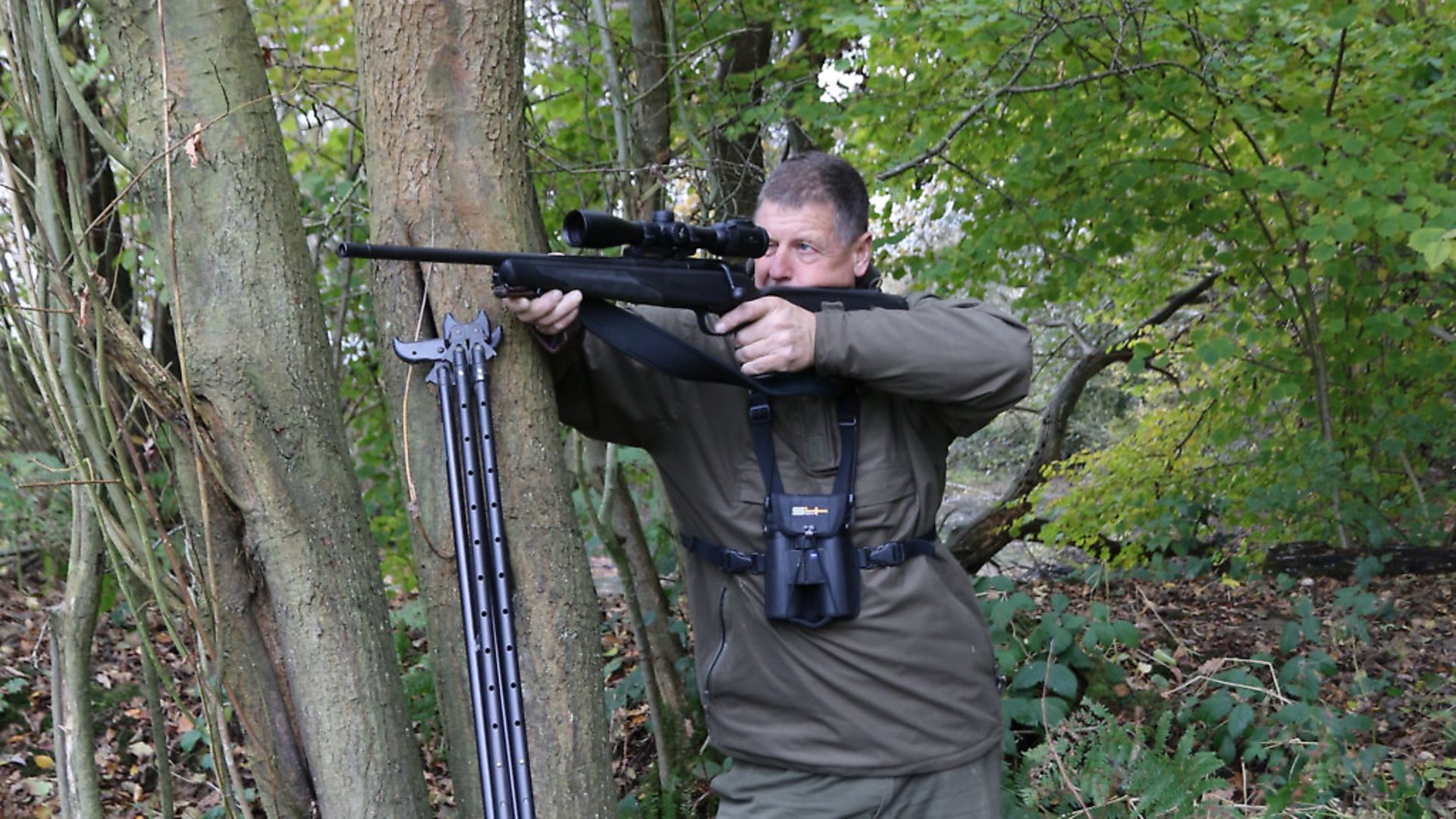 credit: Archant
credit: Archant
Then there is the cost consideration. The smaller scope has a recommended retail price that’s almost £300 less than the big brother. That is not to be sniffed at, even in the rarefied realm of premium optics.
On-paper evaluation is one thing, of course, but there is no substitute for field testing and as a result, the Z8i is bolted down to my trusty Blaser R8. On the range it is everything you’d want. Incredibly clear, bright glass, and with precision engineering making the zeroing process utterly painless. It’s not got the very smallest dot in the optics world but it is still pretty tiny, and even out at 200-300 yards you are not covering too much of the target.
And anyway, this is not a target scope – it’s built for hunting so I’m heading into the Kentish woods in search of roe and fallow. I’m not a natural woodland stalker. However slowly you think you are moving, you are probably going too fast. I find it hard to clear the mind and focus on every single movement. One careless step on a twig and you can spook the whole area. Raise your binos too swiftly and your movement will be spotted.
It’s all about slow, smooth movement, careful glassing and a hawk’s eye for anything that is out of place: the twitch of an ear, the sun catching a white rump.
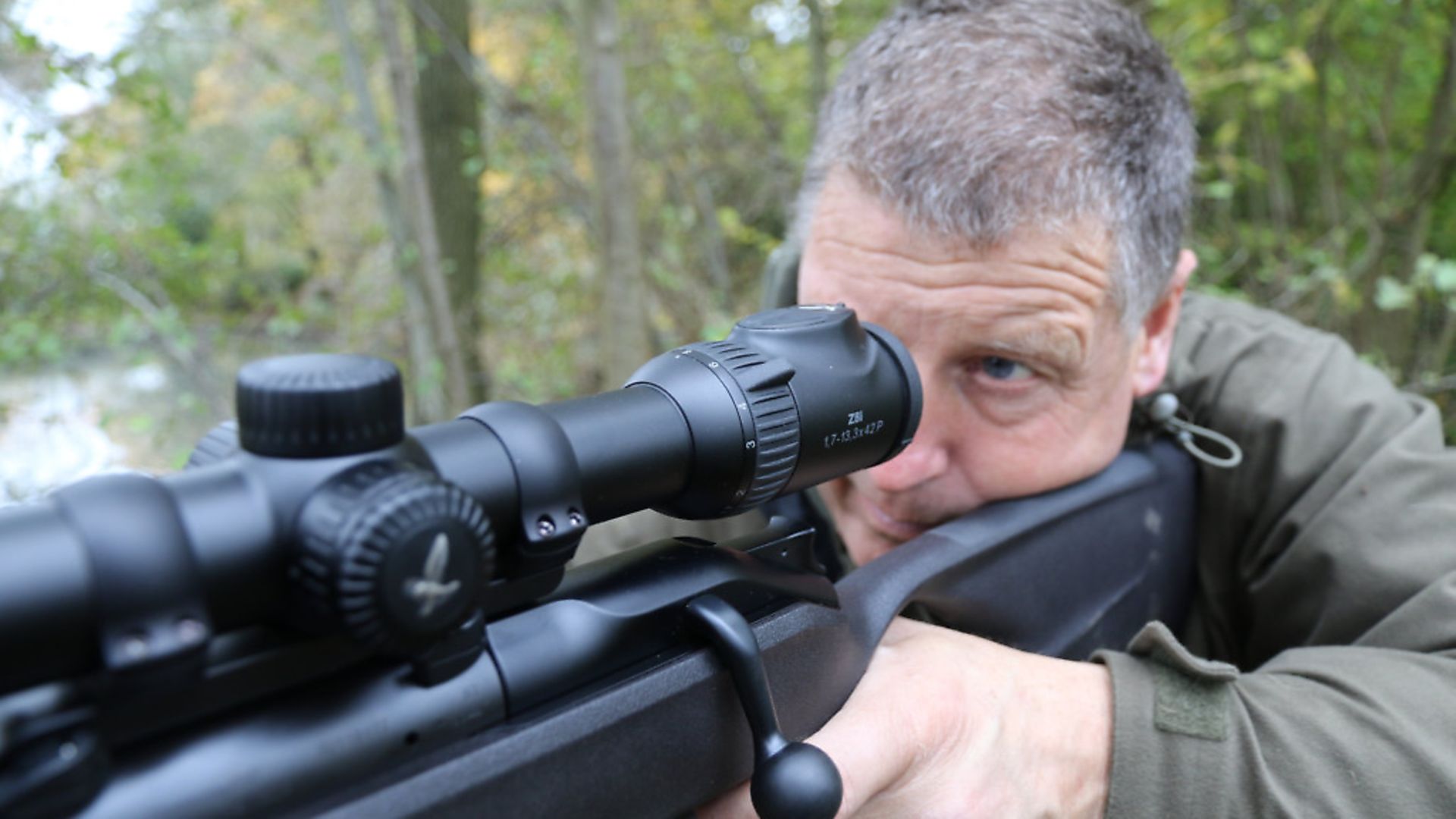 credit: Archant
credit: Archant
You can suddenly find yourself in very close proximity to your quarry and although I always carry sticks, there isn’t always the option to deploy them. The ability to improvise a stable shooting position from a tree branch or even using the sling to make a freehand shot can mean the difference between success and failure.
My progress through the rides is somewhat scuppered by the sheer volume of gamebirds. I send so many pheasants screeching for cover or taking noisily to the air, it starts to fluster me. I know I am stalking too fast and this is confirmed by bumping a roe doe just moments later.
I take a deep breath and chill out for a few minutes to regain some stalking zen and then start forward once more, slower than ever.
I spot a movement ahead and sneak in to take advantage of a gap in the trees, slowly deploying my sticks and mounting the rifle. It’s a fallow pricket but he is quartering away and I can’t make a shot from my vantage point.
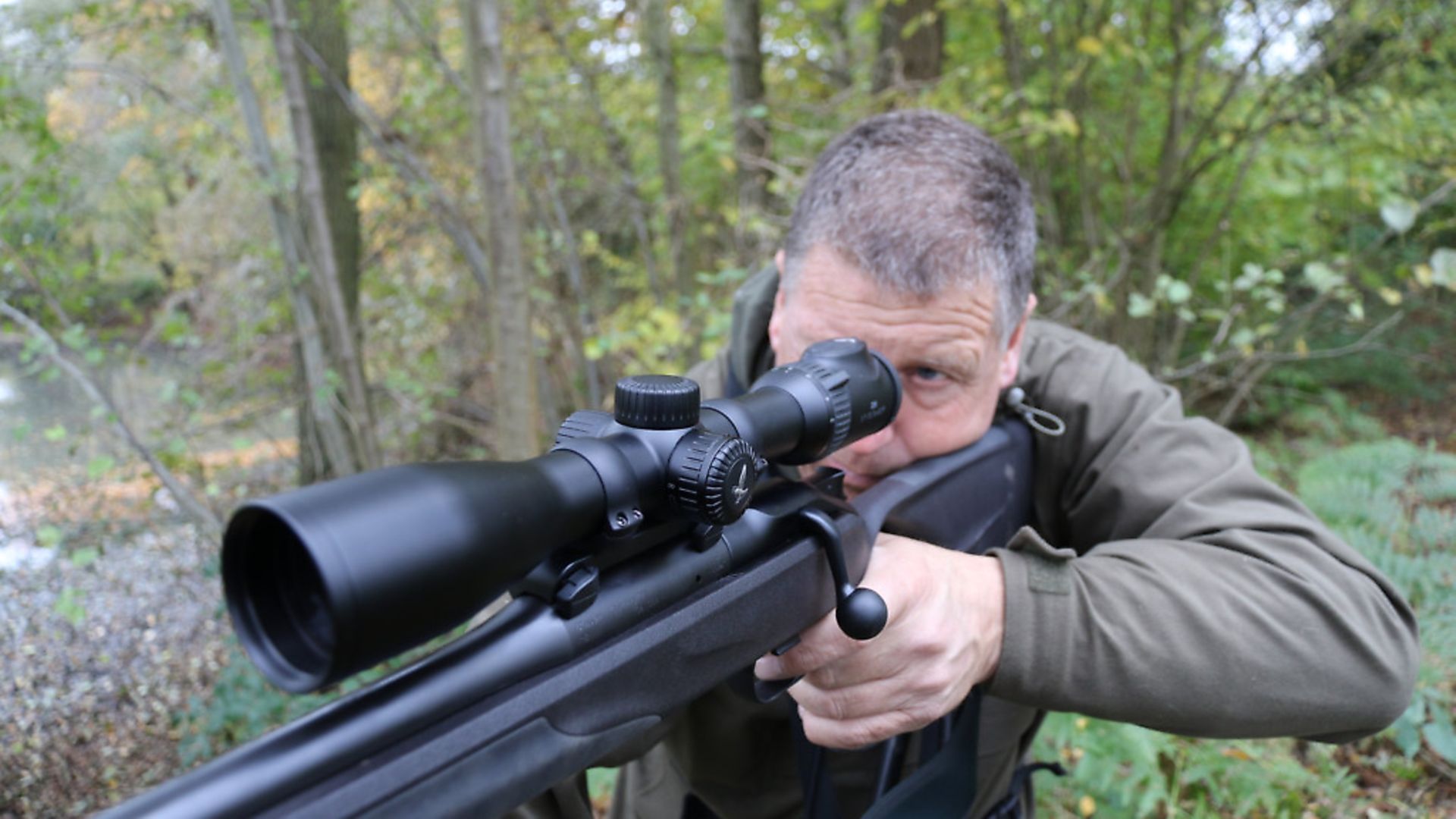 credit: Archant
credit: Archant
I work my way methodically along some cover crop and then take advantage of a nearby high seat to sit out the last of the evening light. A light drizzle sets in, flattening the light out. The lenses have hydrophobic coatings to stop water and dirt ruining your view, while the incredibly high light transmission (93%) ensures that I can wait until the very last for a deer.
A roe doe works her way out from the woods and makes her way into the grass field, most likely heading up to the maize cover that I stalked earlier. I let her come a good 50-100 yards from the trees before taking my shot. With little light left, I would rather she drops in the open than have to track her into cover or borrow the keeper’s dog.
I flick on the illumination to a low ember’s glow and wind up the mag from the 3x I had in the woods to 10x. The image quality even in this flat, blue-grey light is remarkable. Range is around 100 yards and as she pauses, I squeeze off a chest shot. She reacts well to the shot but still runs off into some nearby cover.
I want to leave it a good few minutes before I approach but it is a question of balancing that with the lack of available light. So after five minutes I wander to the shot sight and soon pick up a strong blood trail. Using the torch on my phone, I follow the trail easily and find the doe stone dead about 30 yards into the wood. She’d run a good 75m from the shot site, despite being pinned through both shoulders.
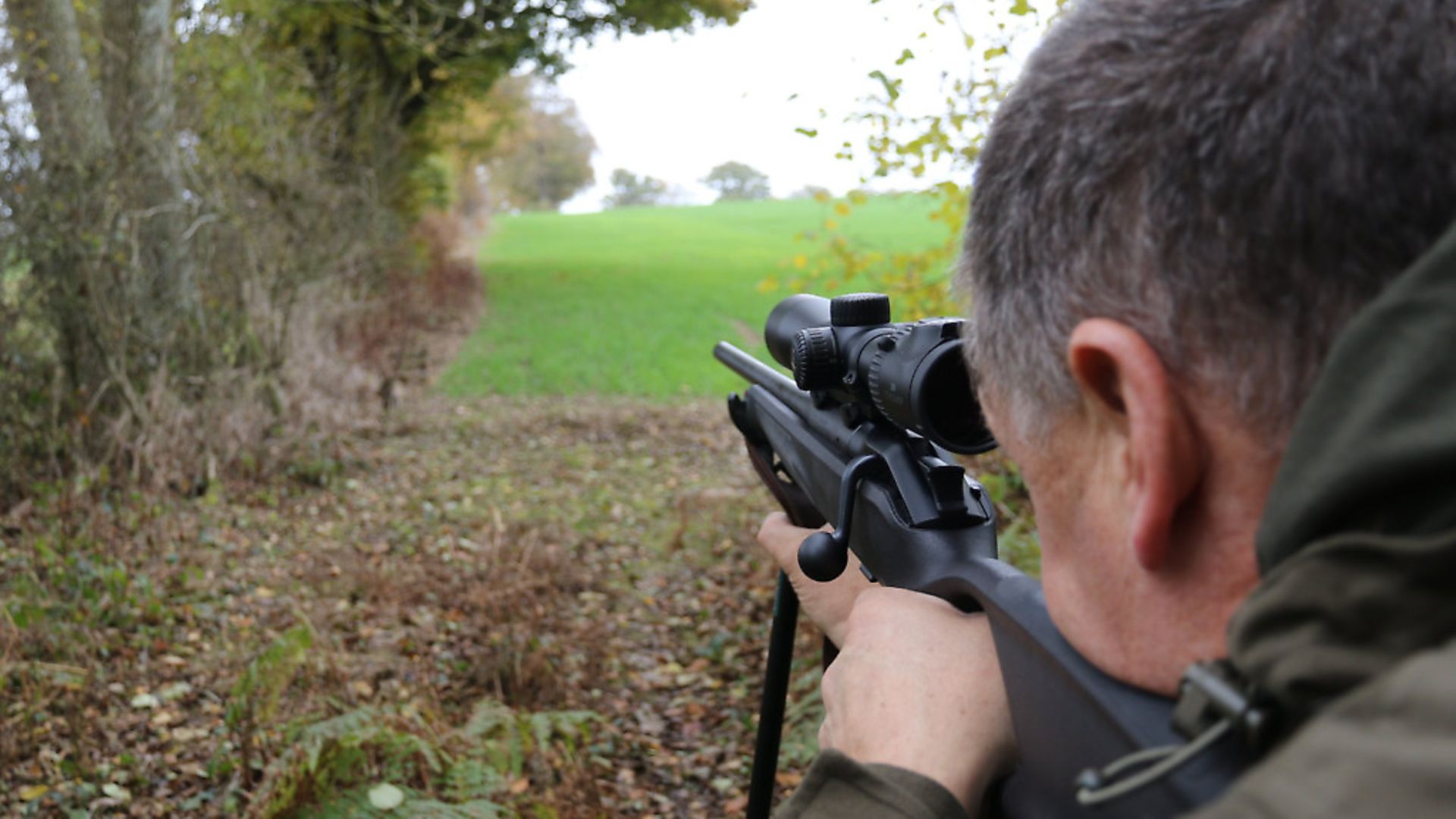 credit: Archant
credit: Archant
After a quick field gralloch it’s time to head off to the larder to get the deer in the chiller as the rain intensifies rapidly. It’s a job well done and proof that even out of its comfort zone, this scope will perform brilliantly.
If you spend all of your time shooting fallow deer at last light from a high seat, or pigs under the moon, would this be the Z8i I recommend to you? No, probably not. But it can do the job if required, make no mistake. However, if you are the kind of rifle shooter that might spend a few days in a German forest in search of driven boar; or maybe head to Africa for some plains game; or tackle an Alp in pursuit of chamois; or get up close and personal after woodland roe deer in the UK; or maybe do a bit of all of those things… then this hard-hitting little powerhouse might be just the ticket. Sometimes, less really is more.
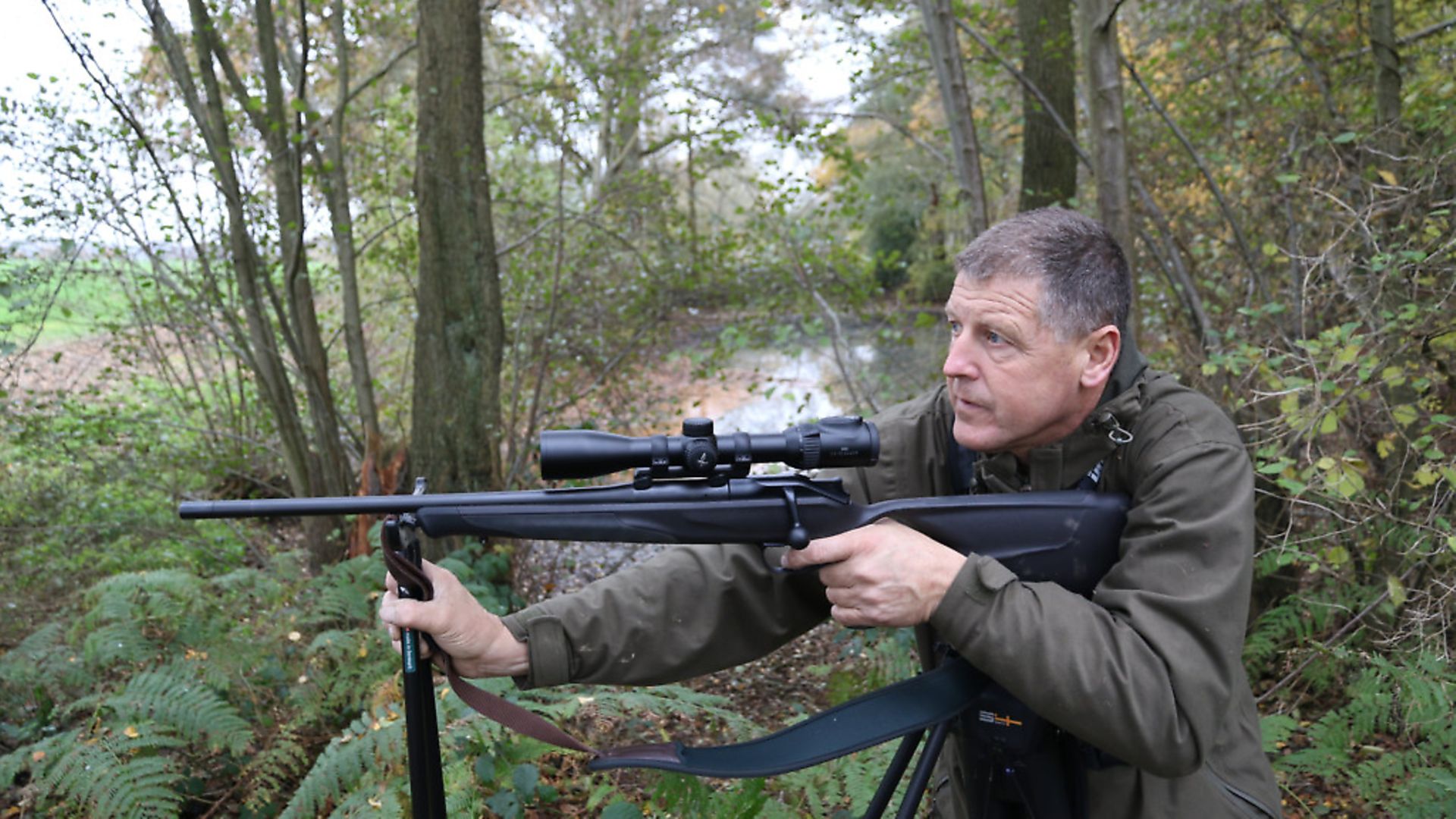 credit: Archant
credit: Archant
Z8i 1.7-13.3x42
• Magnification: 1.7-13.3x
• Effective objective lens diameter (mm): 13.6-42
• Exit pupil diameter (mm): 8.1-3.1
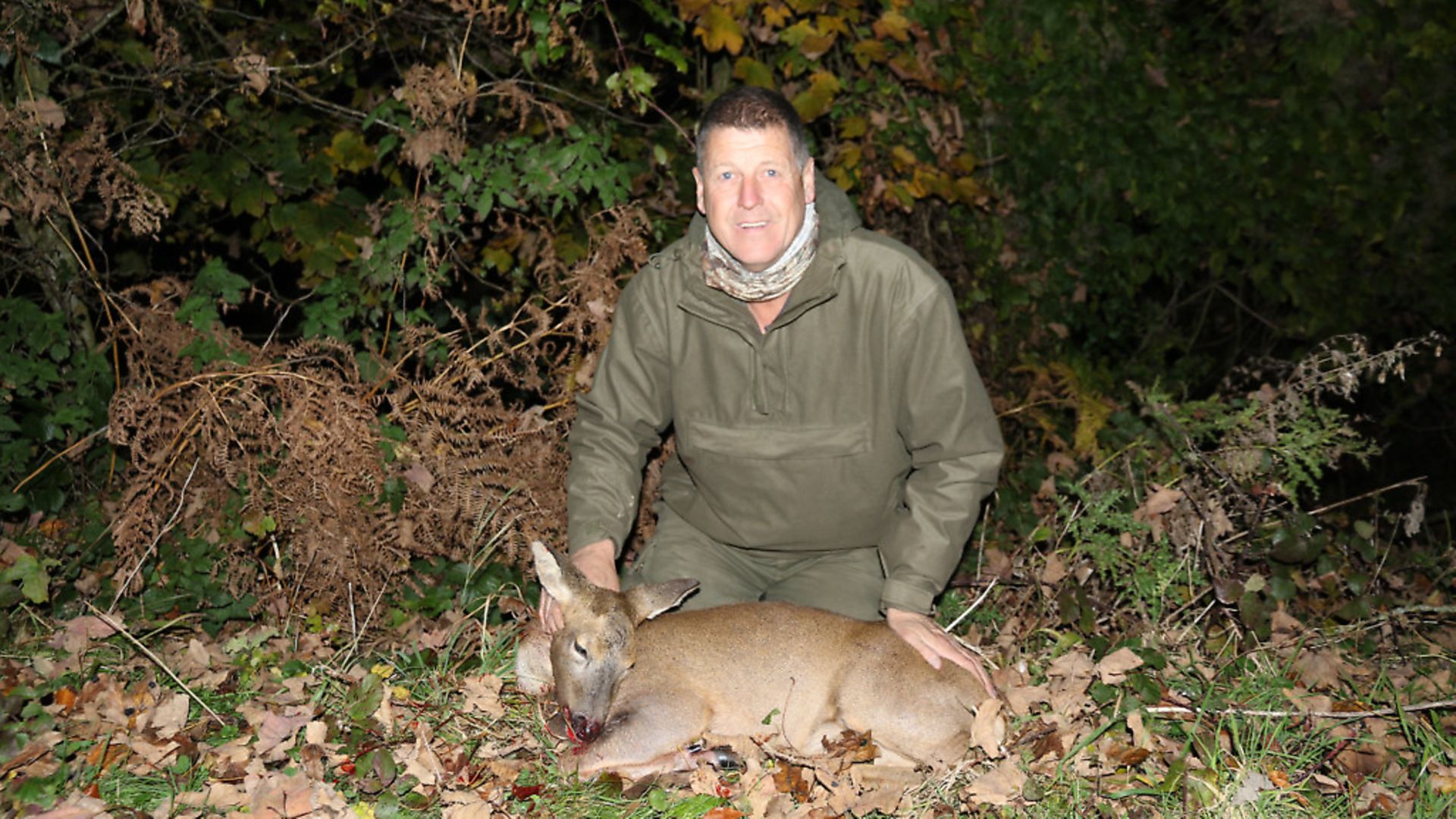 credit: Archant
credit: Archant
• Exit pupil distance (mm) (Eye relief): 95
• Field of view (ft/100 yds / m/100 m): 75.6-9.3 / 25.2-3.1
• Field of view (degrees): 14.4-1.8
• Field of view, apparent (degrees): 24
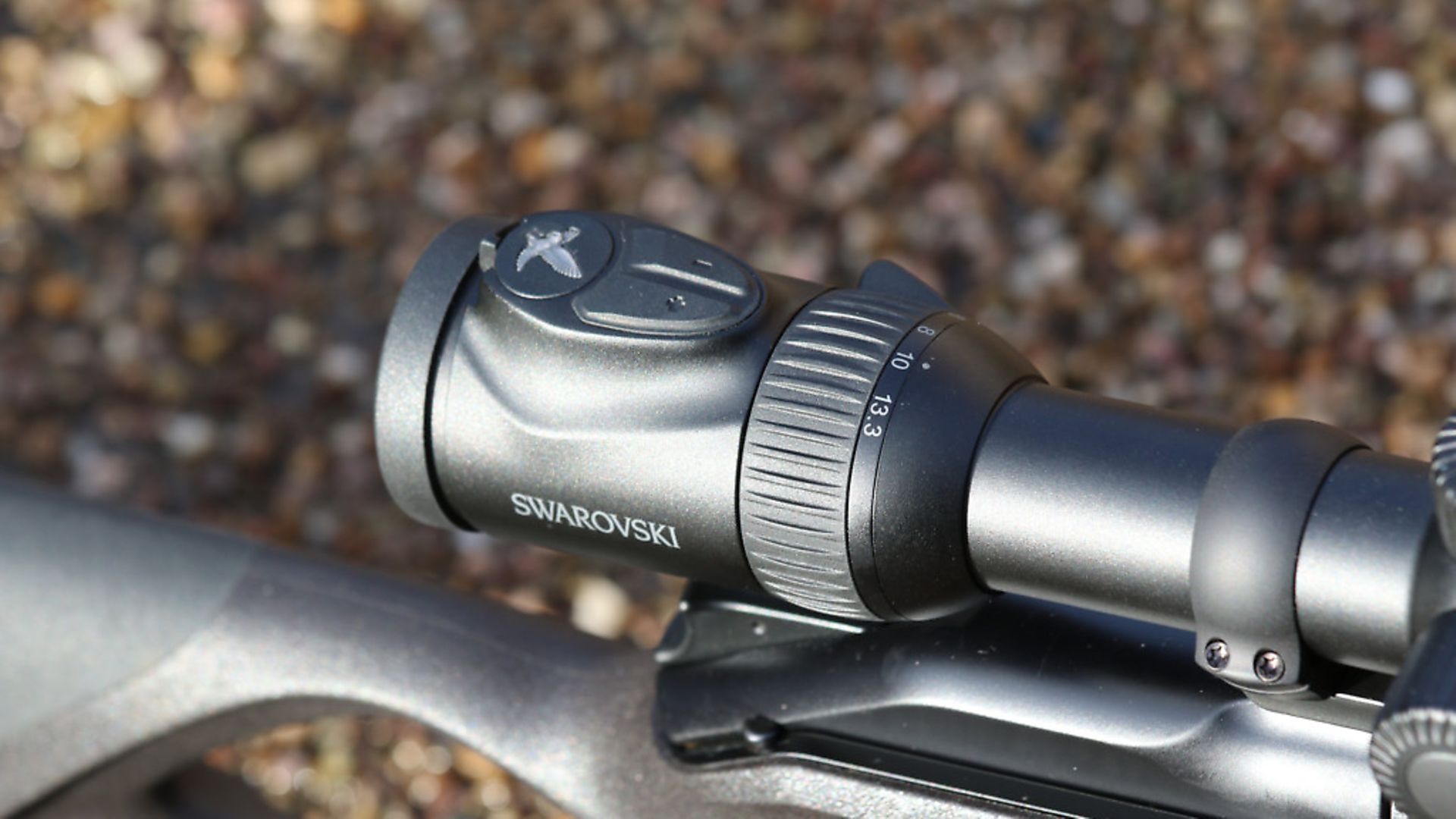 credit: Archant
credit: Archant
• Dioptric compensation (dpt): -3 to +2
• Light transmission (%): 93
• Twilight factor acc. to ISO 14132-1: 4.8-23.6
• Impact point corr. per click (in/100 yds / mm/100 m): 0.36 / 10
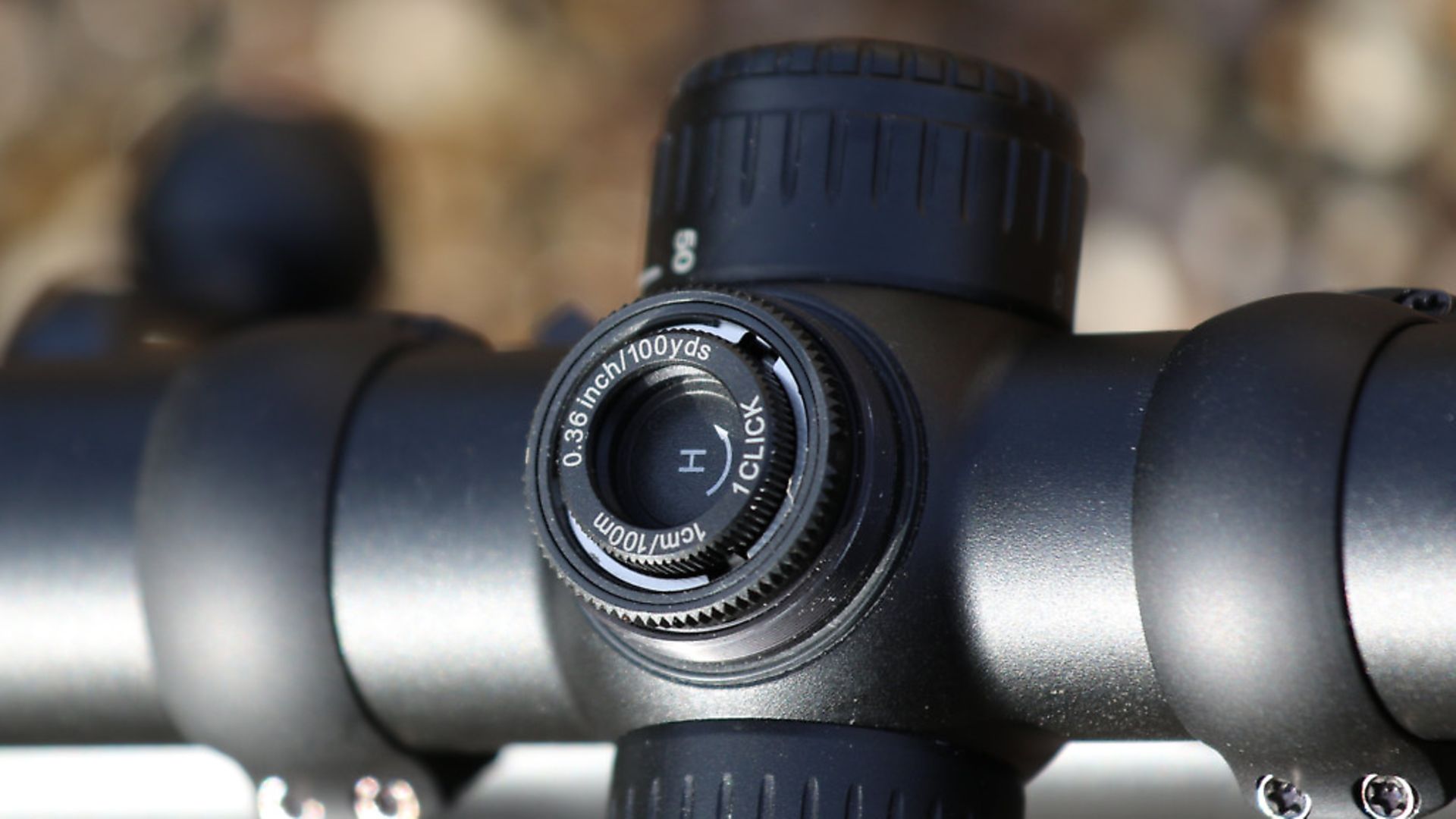 credit: Archant
credit: Archant
• Max. elevation / windage adjustment range (in/100 yds / m/100 m): 54 / 1.5
• Parallax correction (yds / m): 55-? / 50-?
• Objective filter thread: M 44x0.75
• Length (in / mm): 13.2 / 336
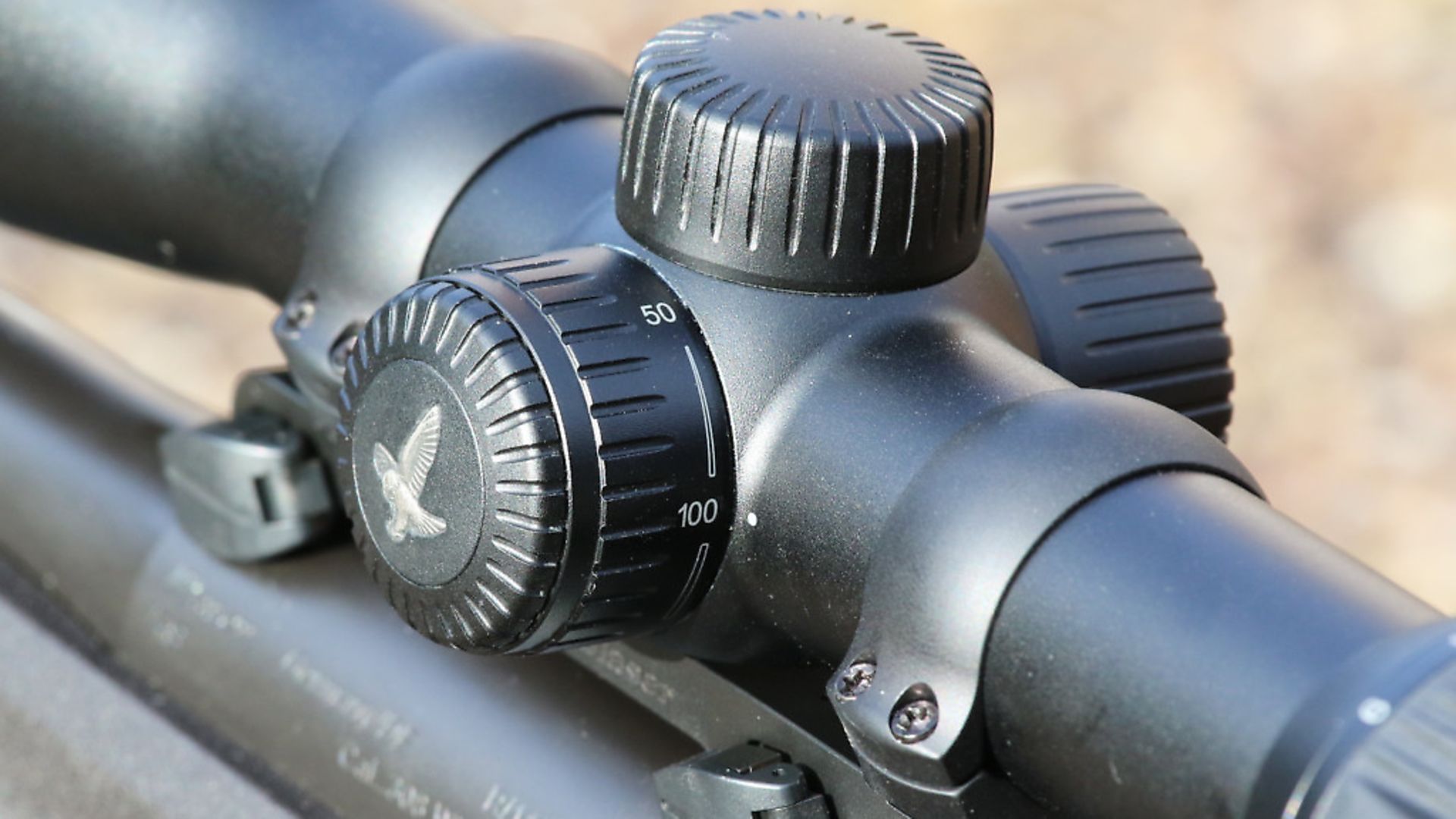 credit: Archant
credit: Archant
• Weight (oz / g): 21.9 / 620
• Central tube diameter (in / mm): 1.18 / 30
• Functional temperature: -4 °F to +131 °F (-20 °C / +55 °C)
• Storage temperature: -22 °F to +158 °F (-30 °C / +70 °C)
• Submersion tightness: 13 ft / 4 m water depth (inert gas filling)